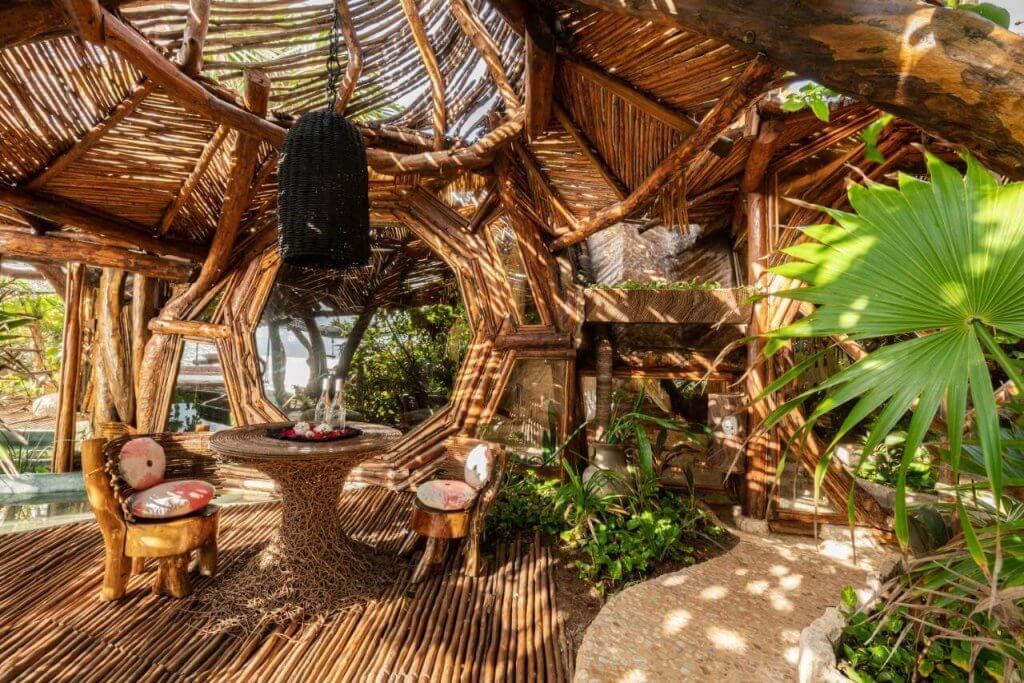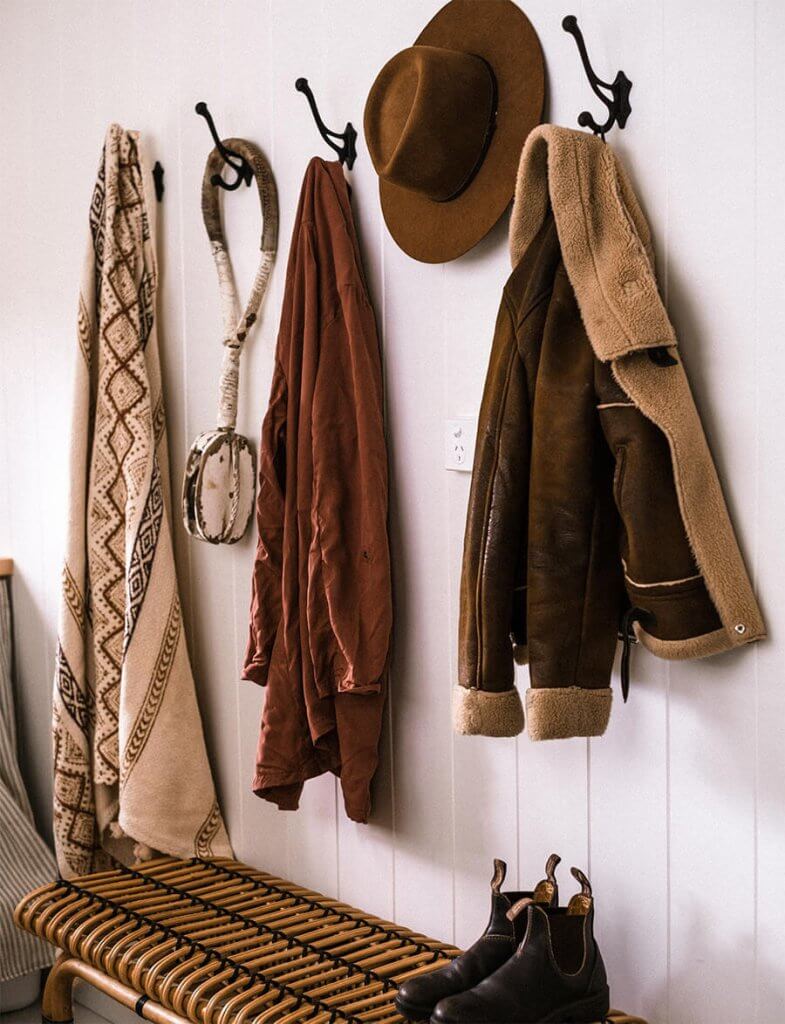Tulum, once a quiet corner of Mexico’s Yucatan Peninsula, is now a highly sought-after tourist destination known for its dreamy beaches, preserved ruins of an ancient Mayan port city, and vibrant culinary scene. But there’s another factor that has increasingly become synonymous with Tulum: its distinct and influential style, referred to as “Tulum style”.
What is Tulum Style?
Tulum style is a distinctive aesthetic that has emerged from the coastal town of Tulum in Mexico, blending elements of local Mexican tradition, boho-chic sensibility, and a profound commitment to sustainability. It’s characterized by the use of natural materials, an earthy color palette, handcrafted textiles, and a strong connection to the outdoors.

In architecture, Tulum style favors materials like weathered wood, stone, and thatch. Structures are usually low-lying, and harmoniously integrated into the natural environment to minimize the impact on local ecosystems. The indoor-outdoor flow is a key feature, with open floor plans, alfresco living spaces, and features that incorporate natural elements such as outdoor showers and green walls.

In interior design, this style showcases an array of natural textures—think rattan, bamboo, seagrass, and jute. The furniture tends to be low and plush, inviting lounging and relaxation. Handmade textiles with Mayan and Aztec patterns are a must, combined with an assortment of potted plants to accentuate the indoor-outdoor connection.
The Origins of Tulum Style
Tulum style is not just a trend that has sprouted out of the blue. Its origins can be traced back to the authentic culture and natural surroundings of Tulum itself. The town was a modest fishing village until the late 20th century, home to stunning biodiversity, pristine beaches, and Mayan ruins.
When it began to attract tourists, it was important to the locals and the eco-conscious visitors that any development should preserve Tulum’s natural beauty and cultural heritage.
The early accommodations in Tulum were ‘eco-chic’ cabanas on the beach, built with rustic, locally-sourced materials. These structures, along with local artisan crafts and the traditional Mayan textiles, have shaped what we now recognize as the Tulum style.
Iconic Examples of Tulum Style
Tulum style is most apparent in the town’s hotels, restaurants, boutiques, and homes, where the seamless blend of the indoors with the natural environment creates a unique aesthetic experience.
Casa Malca: This hotel, set within a repurposed mansion allegedly once owned by the notorious Pablo Escobar, epitomizes Tulum style. Its contemporary design is informed by a robust use of local, sustainably sourced materials, resulting in a luxurious yet eco-friendly ambiance. The interiors feature local art, reclaimed furniture, and plenty of hammocks for leisurely lounging.
Azulik: Another prime example is Azulik, a resort and spa that offers a back-to-nature experience. Its buildings are constructed with a mix of local hardwoods and woven vines, while pathways are lit by candlelight. The rooms lack electric light and Wi-Fi, encouraging guests to immerse themselves in nature.

Hartwood: This open-air restaurant showcases the indoor-outdoor flow intrinsic to Tulum style. Designed entirely with solar power, the kitchen uses traditional Mayan methods, including a wood-burning oven and open grill.
Posada Margherita: A beachfront boutique hotel and restaurant, Posada Margherita’s interiors are decorated with driftwood, seashells, and local crafts, creating a delightful mix of Italian charm and Tulum style.
Tulum Style in Fashion and Clothing
When it comes to fashion, Tulum style is an effortless blend of beach chic, bohemian charm, and ethical consciousness. Just like in Tulum’s architecture and interior design, the fashion aesthetic is characterized by natural fabrics, earthy tones, and handcrafted elements, reflecting the town’s laid-back vibe and commitment to sustainability.

Natural Fabrics: Tulum style favors natural and breathable materials like linen, cotton, and bamboo. These fabrics not only align with the region’s hot climate but also with the eco-friendly ethos that underpins the Tulum lifestyle. You’ll often see loose, flowing linen dresses, cotton kaftans, and bamboo tunics—pieces that embody both comfort and style.
Earthy Tones and Patterns: Mirroring the surrounding environment, Tulum style gravitates toward an earthy color palette. Think sandy beiges, oceanic blues, lush greens, and sun-bleached whites. Patterns inspired by traditional Mayan and Aztec art often feature, adding a touch of cultural authenticity to the outfits.

Handcrafted Elements: Handmade jewelry and accessories are a major part of Tulum style. Items made from local materials like silver, seashells, and natural stones are popular. You’ll often see individuals wearing artisanal pieces like leather sandals, woven beach bags, or beaded necklaces, imbuing their outfits with a sense of unique craftsmanship.
Sustainable Brands: Many Tulum-inspired wardrobes are filled with pieces from sustainable fashion brands, given the lifestyle’s emphasis on mindful consumption. Brands that use organic materials, champion fair trade, and employ local artisans align perfectly with Tulum style.
The “Tuluminati” Phenomenon
An intriguing element of Tulum’s cultural tapestry is the “Tuluminati” — a term coined to describe a specific subset of Tulum’s international visitors and residents. The term is a playful blend of “Tulum” and “Illuminati,” suggesting a somewhat secret or exclusive society. However, in reality, the Tuluminati are not a secret society but rather a group that embodies a particular lifestyle and mindset.

The Tuluminati are primarily expats, digital nomads, entrepreneurs, influencers, and artists drawn to Tulum’s idyllic setting and its unique convergence of traditional Mayan culture, bohemian flair, and eco-consciousness.
They are individuals who appreciate Tulum’s emphasis on wellness, nature, sustainability, and local craftsmanship, often living or vacationing in the town for extended periods. They have an affinity for Tulum’s off-the-grid appeal, its yoga retreats, its plant-based cuisine, and its full moon parties on the beach.
They contribute to, and in turn, are shaped by the Tulum style, often incorporating this aesthetic into their homes, wardrobes, and social media feeds. From flowing linen attire to rustic yet elegant dwellings, the Tuluminati embody the easy-going, nature-inspired ethos of Tulum style.
Why Tulum Style Matters
Tulum style goes beyond a trendy aesthetic—it reflects a way of life that values sustainability, respect for nature, and cultural authenticity. This approach resonates with a growing audience worldwide who aspire to live more harmoniously with the environment and value mindful, ethical consumption.

In a world increasingly affected by climate change and cultural homogenization, the Tulum style offers an alternative design paradigm that celebrates local traditions, materials, and the environment, while still embodying an attractive, contemporary aesthetic.
This is what makes Tulum style so special and influential. As we move forward, it provides a blueprint for how we can create spaces that are both beautiful and respectful of the world around us.
In conclusion, Tulum style, with its unique blend of sustainability, cultural respect, and modern design, presents an aesthetic that is much more than just a trend. It’s an embodiment of a lifestyle that celebrates harmony, simplicity, and a deep connection to our natural world—an ethos that’s needed now more than ever.







